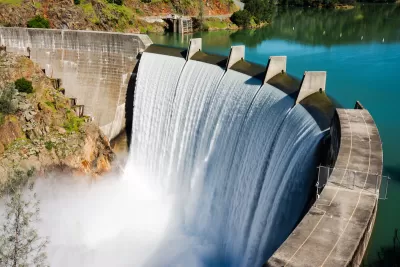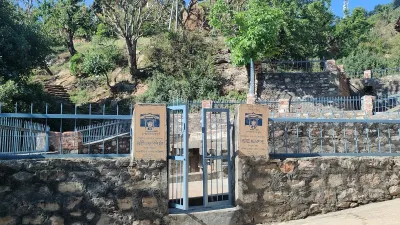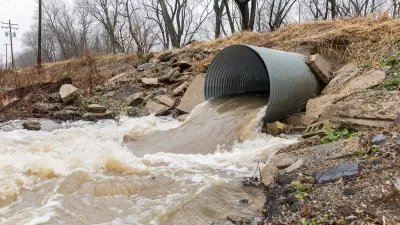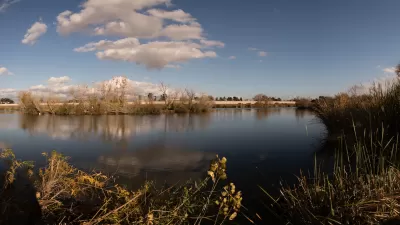A wet winter will replenish the state’s snowpack and reservoirs, but could also increase flooding and wildfire risk in some areas.

An update to California’s Water Plan provides a blueprint for upgrading the state’s water infrastructure to ensure sustainable water systems as the shifting climate brings longer droughts, stronger storms, and more unpredictable weather patterns.
According to an article for KQED by Ezra David Romero, “With climate change “an urgent threat,” the state’s sprawling plan, updated every five years, addresses three key areas: strengthening watersheds, addressing climate change and closing a gap in ‘long-standing inequities’ in water management.”
California’s recently released water conservation rules garnered criticism for relaxing some standards that could lead to smaller water savings. Abraham Mendoza of advocacy group Community Water Center says the plan does “not speak to solving the problem in a timely manner.”
This year, a wet winter replenished the state’s snowpack, which was down to 25 percent in January. “The heightened snowpack is also good news for staving off the threat of early-season wildfires” at high elevations. But the increased vegetation at lower elevations could also mean increased fire risk in those areas. According to UCLA climate scientist Daniel Swain, “All the water will allow “invasive grasses to fill in the gaps between sagebrush and Joshua trees,” which ‘may increase the likelihood of fires in the deserts earlier in the season.’”
FULL STORY: California Snowpack: Gov. Newsom Unveils Water Plan for a Climate-Changed Future

Planetizen Federal Action Tracker
A weekly monitor of how Trump’s orders and actions are impacting planners and planning in America.

Congressman Proposes Bill to Rename DC Metro “Trump Train”
The Make Autorail Great Again Act would withhold federal funding to the system until the Washington Metropolitan Area Transit Authority (WMATA), rebrands as the Washington Metropolitan Authority for Greater Access (WMAGA).

DARTSpace Platform Streamlines Dallas TOD Application Process
The Dallas transit agency hopes a shorter permitting timeline will boost transit-oriented development around rail stations.

San Francisco's School District Spent $105M To Build Affordable Housing for Teachers — And That's Just the Beginning
SFUSD joins a growing list of school districts using their land holdings to address housing affordability challenges faced by their own employees.

Car-Centric LA Suburb Looks to a Train-Oriented Future
City leaders in Rancho Cucamonga, the future western terminus of the Brightline West rail line to Las Vegas, want to reimagine the city as a transit-oriented, pedestrian-friendly community.

New Alaska Bitcoin Mine Would Burn as Much Energy as the State’s Largest Coal Plant
Fueled by “stranded” natural gas, the startup hopes to become the largest in the US, and to make Alaska an industry center.
Urban Design for Planners 1: Software Tools
This six-course series explores essential urban design concepts using open source software and equips planners with the tools they need to participate fully in the urban design process.
Planning for Universal Design
Learn the tools for implementing Universal Design in planning regulations.
Municipality of Princeton
Roanoke Valley-Alleghany Regional Commission
City of Mt Shasta
City of Camden Redevelopment Agency
City of Astoria
Transportation Research & Education Center (TREC) at Portland State University
US High Speed Rail Association
City of Camden Redevelopment Agency
Municipality of Princeton (NJ)





























